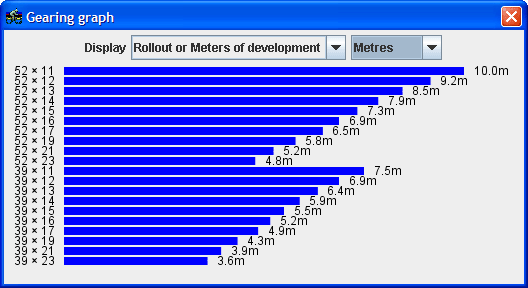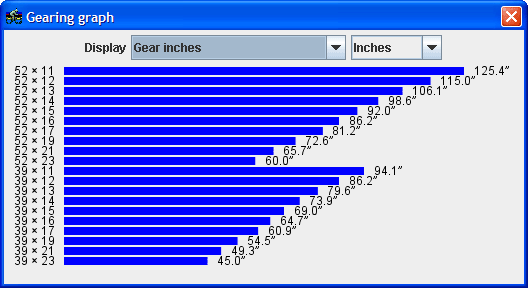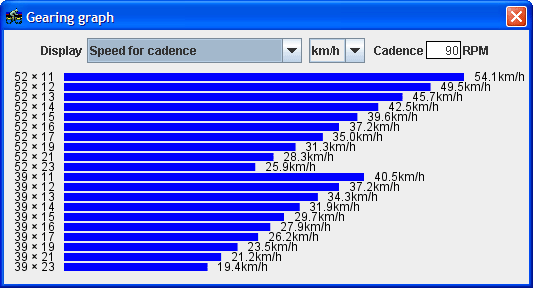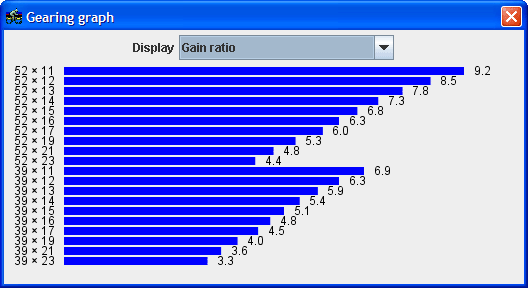Below is a description of the various graphs that BikeCAD can generate to display gearing data. To see the graphs in BikeCAD, choose View >> Gearing graph or click on the ![]() icon in the top toolbar.
icon in the top toolbar.

Rollout (or meters of development) refers to the distance travelled due to a single turn of the cranks. Rollout is calculated with the following formula:
Circumference of drive wheel × number of teeth in front chainring / number of teeth in rear cog
Rollout is typically calculated in meters or feet. In BikeCAD, you can express it in meters, feet, inches, or millimeters. The selected chainring and sprocket combinations are listed on the left and the resulting rollout is displayed on the right, next to the bar graph which gives a visual representation of the magnitude.

Gear inches is a lot like rollout except while rollout is a function of drive wheel circumference, gear inches is a function of drive wheel diameter. Gear inches tells us how large a wheel we would need to achieve an equivalent mechanical advantage using no gearing at all. For example, riding a bike with a 26" wheel and a 32/16 chainring/cog combination is like riding a 52" wheel with no gears. Gear inches are calculated with the following formula:
Diameter of drive wheel × number of teeth in front chainring / number of teeth in rear cog
Gear inches is typically calculated in inches. However, BikeCAD can express it in inches, feet, meters or millimeters.

Another possibly more meaningful way of thinking about gears is to account for pedaling speed (or cadence) and to determine the resulting speed of the bicycle at various gear combinations. As shown above, BikeCAD lets you enter a specific cadence and displays the resulting speed in either km/h or mph.

One factor that is neglected in all the above calculations is crank arm length. Two otherwise identical bikes with different crank lengths will ultimately offer different degrees of mechanical advantage. The bike with the longer crank arms will offer a greater mechanical advantage. The Gain ratio is calculated as: the distance travelled by the bike divided by the distance travelled by the pedals during one turn of the crank.
One particularly nice thing about the gain ratio is that it is a unitless number. The value is the same whether you calculate it in inches or millimeters. A sample graph is shown above.

